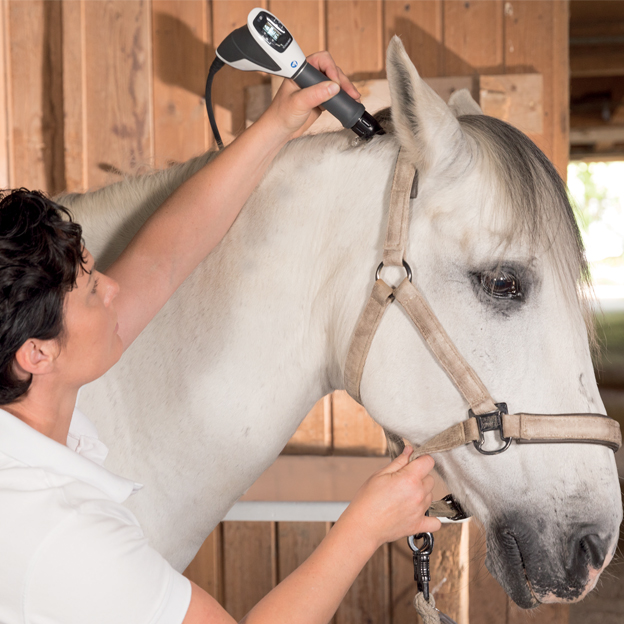Every little thing You Need to Understand About Equine Therapy for Mental Health
Every little thing You Need to Understand About Equine Therapy for Mental Health
Blog Article
Reviewing the Efficiency of Laser Treatment in Equine Treatment for Injury Recovery
The examination of laser treatment's efficiency in equine injury recovery rests on numerous aspects, including recuperation time, pain mitigation, and cells regrowth. Clinical studies recommend noteworthy improvements in conditions like tendonitis and osteoarthritis, connected to boosted cellular function and raised ATP manufacturing. Veterinarians frequently observe remarkable end results with laser therapy compared to traditional approaches, placing it as a critical element in equine care. Nevertheless, the need for constant surveillance and personalized therapy plans can not be overemphasized. What certain professional evidence sustains these claims, and how do vets execute these methods in practice?
Comprehending Laser Therapy
Laser treatment has actually ended up being an essential tool in veterinary medicine, specifically in the therapy of equine conditions. Known for its non-invasive nature and efficacy, laser treatment entails the application of certain wavelengths of light to promote tissue fixing and lower swelling. This therapeutic modality is significantly preferred for its capability to accelerate the healing procedure in equines dealing with a selection of bone and joint injuries and chronic problems.
The primary system behind laser therapy is its capability to boost mobile functions. Furthermore, laser treatment advertises vasodilation, improving blood flow and oxygen distribution to broken tissues, thus accelerating recovery.
In equine medicine, laser therapy is specifically advantageous for problems such as tendonitis, osteo arthritis, and injury healing. The technique is lauded for its pain-relieving residential properties, permitting horses to restore flexibility and function much more quickly. Vets additionally value its minimal negative effects compared to other treatment techniques, making it a reliable and secure alternative for equine treatment.

Exactly How Laser Therapy Works

Upon absorption, these photons cause a collection of biochemical modifications, enhancing mitochondrial function and bring about boosted adenosine triphosphate (ATP) production. This rise in ATP increases mobile metabolic process, promoting cells repair work and regeneration. In addition, laser therapy modulates inflammatory feedbacks by influencing cytokine levels and reducing oxidative tension, consequently alleviating discomfort and swelling.
Another significant aspect of laser therapy is its role in improving microcirculation. The treatment promotes vasodilation, enhancing blood circulation and oxygen distribution to damaged cells (Equine Therapy). This helps with the elimination of cellular particles and supports the spreading of fibroblasts and collagen synthesis, important for injury healing
Scientific Evidence
The efficacy of laser therapy in equine treatment has actually been corroborated via different professional research studies, showcasing its healing potential throughout a series of problems. Several regulated trials and observational researches have documented substantial improvements in tissue repair service, discomfort reduction, and general recovery timelines. As an example, a research conducted by Turner et al. (2012) demonstrated that equines treated with low-level laser treatment (LLLT) for ligament injuries exhibited accelerated healing contrasted to those obtaining conventional treatments. The research study highlighted a significant decrease in inflammation and enhanced collagen development.
Likewise, research study by Johnson and associates (2015) focused on equine muscle mass injuries, disclosing that laser treatment significantly sped up muscle fiber regeneration and reduced muscular tissue rigidity. These searchings for were corroborated by histological analyses revealing better muscle tissue company. Clinical analyses have actually shown that laser treatment can alleviate persistent conditions such as osteoarthritis. A research by Smith et al. (2018) reported that equines with osteoarthritic joints experienced noteworthy pain alleviation and boosted variety of movement complying with a regimen of laser treatment sessions.
Veterinarian Insights

Veterinarians likewise value the convenience of laser treatment. It can be used for a vast array of conditions, from superficial injuries to much deeper bone and joint injuries. Dr. Emily Brown highlights its energy in dealing with problems like tendonitis and osteo arthritis, where content traditional treatments usually fall brief. She mentions that laser therapy can be tailored to the specific demands of each steed, making certain optimum end results.
Additionally, veterinarians value the ability to incorporate laser treatment with other treatment methods. This multimodal strategy can boost general treatment efficacy, giving a thorough remedy for equine rehab. Such endorsements from skilled experts underscore the expanding approval and application of laser therapy in equine medication.
Practical Considerations
A key facet of carrying out laser therapy in equine treatment entails comprehending the useful factors to consider that guarantee its efficacy and safety. It is critical to choose the ideal laser gadget, as various kinds differ in wavelength, power, and infiltration deepness. Veterinarians have to be skilled in these specifications to customize treatment methods effectively per injury type
In addition, the regularity and period of laser therapy sessions require cautious preparation to make click here for more the most of healing benefits while decreasing any type of possible unfavorable results. Consistent tracking of the steed's response to therapy can lead essential adjustments in the treatment program. Establishing a safe and controlled setting throughout treatments is also necessary to avoid unintentional exposure to laser exhausts, which might harm both the horse and the trainer.
Educating and accreditation of personnel administering laser therapy are vital to make certain proper technique and to support security requirements. Furthermore, keeping exact documents of each session, consisting of laser setups and observed outcomes, is crucial for examining the total effectiveness of the treatment and for making data-driven decisions.
Conclusion
Laser therapy has actually become a reliable method in equine injury recovery, supplying significant advantages in recuperation time, discomfort alleviation, and tissue healing. Clinical studies underscore substantial renovations in problems such as tendonitis and osteoarthritis, credited to enhanced cellular feature and boosted ATP production. Veterinarian monitorings corroborate these findings, highlighting premium end results contrasted to conventional treatments. For optimal results, continual tracking and personalized treatment methods stay vital in leveraging the full capacity of laser treatment in equine treatment.
Report this page